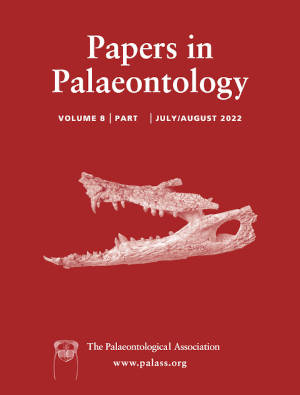Article: Upper Cretaceous European theropod palaeobiodiversity, palaeobiogeography and the intra-Maastrichtian faunal turnover: new contributions from the Iberian fossil site of Laño
Publication: Papers in Palaeontology
Volume:
8
Part:
1
Publication Date:
2022
Article number:
e1419
Author(s):
Erik Isasmendi, Angelica Torices, José Ignacio Canudo, Philip J. Currie, and Xabier Pereda-Suberbiola
DOI:
10.1002/spp2.1419
Abstract
Abstract A total of 227 theropod teeth have so far been recovered from the upper Campanian Laño site (northern Iberian Peninsula). The teeth were studied for their qualitative and quantitative features. From the theropod sample found at Laño, seven morphotypes attributed to five taxa are identified: a medium to large abelisaurid (Arcovenator sp.) and four small coelurosaurians (Dromaeosauridae indet., Paraves indet., cf. Paronychodon sp. and cf. Richardoestesia sp.) Together with the ground bird Gargantuavis and a possible ornithomimosaur, the theropod fauna of Laño might be composed of two medium–large-sized non-avian theropods, four small-bodied non-avian theropods and a large terrestrial bird. This makes the Laño site the richest and most diverse latest Cretaceous theropod site in Europe. Furthermore, the Laño site and the Upper Cretaceous localities of Europe that have yielded theropod remains suggest that the medium–large-sized theropods were abelisaurids or indeterminate theropods. The small theropods are more abundant, diverse and represented by different dromaeosaurids, Paronychodon, Richardoestesia or related forms, troodontids and, probably, by other paravians. Of the birds, enantiornithines, gargantuaviids and ornithurines are also common in the European Upper Cretaceous sites. The theropod assemblage of Laño, together with the taxa of other Upper Cretaceous sites, supports the idea that several theropod dispersal events took place during the Cretaceous. This resulted in a mixture of European endemic, Asiamerican and Gondwanan forms. This study also supports the hypothesis that the intra-Maastrichtian faunal turnover that occurred in the Ibero-Armorican landmass seems to have had no apparent effect on theropods.
